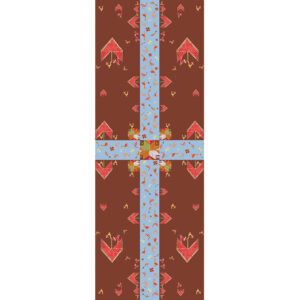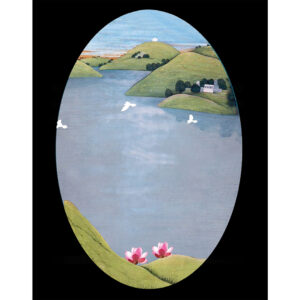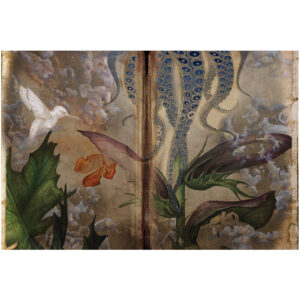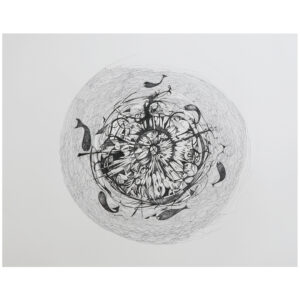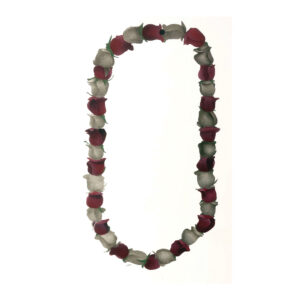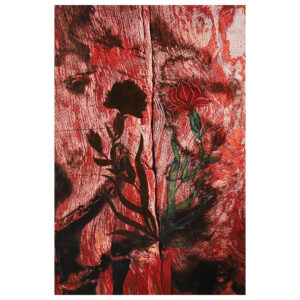Currently Empty: ₨0.00
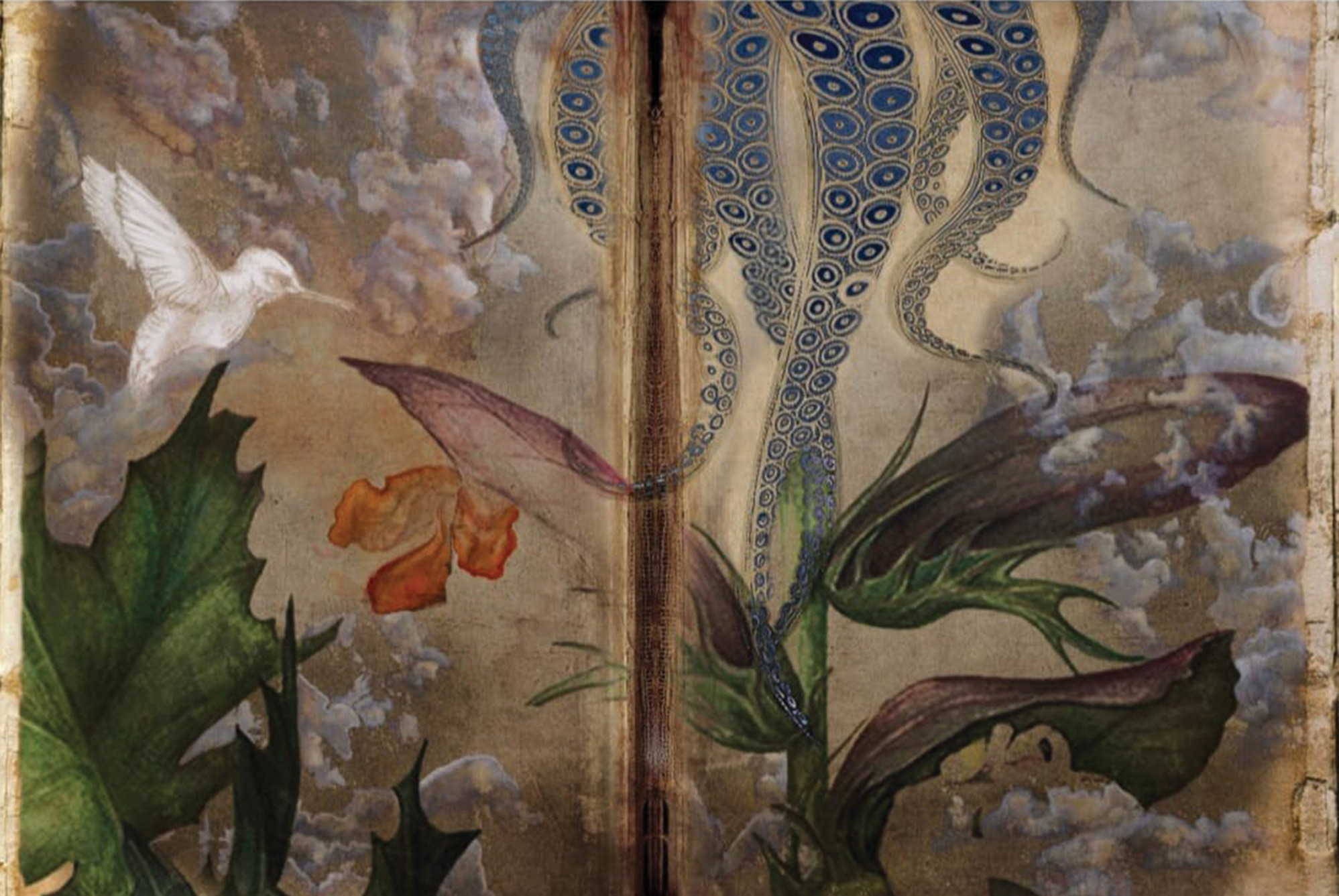
A group show featuring the works of Dr. Wardah Naeem Bukhari, Faiza Bhatti, Hassnain Awais, Maria Waseem, Waseem Ahmed, Muhammad Atif Khan, Muhammad Umer Jamil, and Ozma Bhatti was recently held at Fakir Khana Museum in Lahore.
Ecology is one of the intricate elements that intertwine our existence as humans with the natural world. Its significance lies in examining our interactions with the environment and in safeguarding it. Essentially, ecology pertains to the delicate equilibrium between living organisms and their surroundings; it encompasses both the physical aspects of nature and the spiritual essence that permeates all living beings.
Ecology in historical museums powerfully reminds us of humankind’s historical relationships with the environment. Exhibitions highlighting ancient societies’ respect and reliance on nature underscore the close connection between humans and supporting ecosystems. Utilizing natural materials and ancient techniques, artists symbolise a healthy coexistence with the environment, reinforcing this message.
Ecology inspires artists in aesthetics, transcending practical applications. The natural world’s intricacy and beauty inspire contemporary artists who incorporate ecological themes into their works. Free from realistic constraints, they use symbolism and metaphor to explore the relationship between people and nature. They urge viewers to reflect on the significant impacts of our ecological footprint and envision a more sustainable future through powerful and thought-provoking images.
“Interwoven Ecologies” serves as both a historical memorial and an insight into the present, highlighting the ongoing dialogue between humans and nature. It celebrates our interdependence, calls for action, and demonstrates art’s timeless power to inspire change. This exhibition challenges us to reconsider our place in the world and accept our role as caretakers of the planet by exploring ecology, nature, history, and artistic expression.
Wardah Naeem Bukhari connects with indigenous crafts and cultural practices, fostering a deeper appreciation for the history, wisdom, and creativity of indigenous peoples. She combines this with a sincere effort to preserve their cultural heritage for future generations. Her work fuses the phulkari garden craft of Punjab with the Persian Char Bagh garden theme, creating rich, diverse traditional arts and crafts with a contemporary twist. She highlights the significance of ecology in indigenous craft and Persian Mughal South Asian art through a futuristic approach.
Faiza Bhatti reinterprets archived images in her unique style, creating new artworks from existing content. As a digital artist, she revives past eras in the present, crafting beautiful miniature landscapes that showcase cultural landscapes’ natural beauty and emphasize their significance and spiritual connection, focusing on ecology.
Hassnain Awais reshapes his identity and belonging through personal archiving, weaving memories into a powerful approach that connects historical perspectives and nature. He translates complex emotional landscapes into rich visual tapestries, exploring the emotional relationship with the natural environment and the spiritual aspects of ecology.
In “Experience The Other Side of Silence,” Maaria Waseem and Waseem Ahmed merge historical narratives of Pakistan’s North and South. Through their fusion of photography and miniature painting, they uncover forgotten stories in ancient ruins and cultural motifs. This visual journey through history, politics, and culture invites reflection on the legacies of kings, conquerors, and mythologies. Join us in exploring Pakistan’s rich heritage, meticulously captured and reimagined in this captivating exhibition.
Muhammad Atif Khan’s work blends South Asian expressive narrative with Central Asian/Persian aesthetics within the region’s popular visual culture. Drawing inspiration from Mughal culture’s extensive iconography, he incorporates images of daily life and elements from local truck art. His contemporary narrative bridges the past and present, spreading the message of spiritual and martial world connections and raising ecological awareness in education for younger generations.
Muhammad Umer Jamil explores the interplay of nature and humanity, capturing the essence of subjects before painting. His current focus contrasts human life with the rose’s cycle, revealing parallels from birth to death. Through meticulous deconstruction, he mirrors the struggles and beauty of both realms, prompting viewers to contemplate their profound interconnectedness.
Ozma Bhatti’s profound exploration intersects philosophical mysticism and ecology, particularly within climate action and ecosystem resilience. Reflecting on interconnectedness and oneness, her work resonates with ecological principles. Using symbolic elements like water, fish, and flowers, she beautifully illustrates life’s essence and nature’s intricate connections. This convergence emphasizes restoring harmony in the natural world, inspiring action toward a sustainable future. The exhibition invites viewers to reflect on the profound insights from this fusion of philosophy and ecology, connecting us with nature’s cycle and the symphony of existence.
Caption
Dr. Wardah Naeem Bukhari, Eco of life, 2024, Digital Collage, 27 x 76 cm
Muhammad Umer Jamil, Untitled, 2024, Gouche on wasli paper, 17.78 x 40.64 cmFaiza Bhatti, The
Harmony of nature, 2024, Single Channel Video, 00:30 sec
Hassnain Awais, New Emergence, 2024, Mixed medium with printmaking, 88.9 x 60.96 cm
Muhammad Atif Khan, Valley of the heart, 2021, Archival inkjet print on hahnemuhle paper, 50.8 x 50.8 cm
Maria and Waseem Ahmed, The other side of silence, 2022, Photograph print on archival paper, paint on print with Dry Pigment color and silver leaf, 33.8 x 50.8 cm
Ozma Bhatti, Symphony of nature, 2024, pen on paper, 50.8 x 76.2 cm

